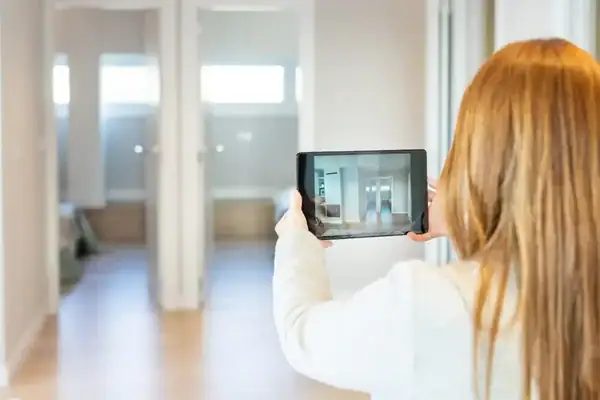How to Attract Remote Commercial Real Estate Buyers in the Post-Pandemic Market?
Post-pandemic, the landscape of commercial real estate has undergone a dramatic shift. The rise of remote work has transformed the way businesses operate, leading to a reevaluation of commercial properties and an increase in demand for flexible, adaptable spaces. For sellers navigating this evolving market, attracting remote commercial real estate buyers has become a priority. In this blog, we’ll explore effective strategies to capture the attention of these buyers for commercial property and close successful deals.
Understanding the Remote Buyer
Before diving into strategies and learning how to find buyers for real estate, it’s crucial to understand the mindset of remote buyers for commercial properties. These buyers are often seeking properties that can accommodate a hybrid work model, providing the flexibility to support both in-person collaboration and remote work setups. Additionally, they prioritize features such as technology infrastructure, amenities, and location accessibility to enhance the remote work experience for their employees.
Leveraging Technology
In the digital age, technology plays a vital role in attracting remote commercial real estate buyers. Utilize high-quality virtual tours, 3D renderings, and interactive floor plans to showcase properties effectively. Leverage social media platforms and targeted online advertising to reach a broader audience of potential buyers. Additionally, consider investing in virtual staging to demonstrate the property’s potential and appeal to remote buyers.
Highlighting Flexibility and Adaptability
Flexibility is key in the post-pandemic market, and highlighting the adaptable nature of commercial properties can be a powerful selling point. Emphasize features such as modular layouts, customizable spaces, and flexible lease terms that cater to the evolving needs of remote businesses. Showcase how the property can be easily reconfigured to accommodate changing work dynamics, whether it’s a shift to remote work or a return to in-person collaboration.
Emphasizing Technology Infrastructure
In a remote-first world, robust technology infrastructure is non-negotiable for commercial properties. Highlight features such as high-speed internet connectivity, advanced security systems, and integrated smart technology that support seamless remote operations. Showcase how the property is equipped to handle the demands of modern businesses, from video conferencing capabilities to cloud-based storage solutions.
Curating a Seamless Remote Experience
Incorporate innovative tools and technologies to enhance the remote buying experience for potential buyers. Offer virtual consultations, online document signing, and digital transaction management to streamline the process and accommodate busy remote professionals. Provide comprehensive online resources, including detailed property information, financial projections, and market insights, to empower buyers to make informed decisions from anywhere in the world.
Networking with Remote-Focused Professionals
Networking remains a powerful tool in the real estate industry, even in a remote environment. Connect with commercial property estate agents who specialize in catering to remote buyers and leverage their expertise and networks to expand your reach. Attend virtual industry events, webinars, and networking sessions to forge connections with remote-focused professionals and tap into new opportunities.
Cultivating a Strong Online Presence
In the digital era, an engaging online presence is essential for attracting remote commercial real estate buyers. Invest in professional photography, compelling property descriptions, and informative blog content to showcase your listings effectively. Optimize your website for search engines to ensure maximum visibility and leverage social media platforms to engage with potential buyers and build relationships.
Showcasing Remote Work-Friendly Amenities
Remote buyers are often drawn to properties that offer amenities and services tailored to support remote work setups. Highlight features such as on-site co-working spaces, outdoor work areas, fitness facilities, and food and beverage options that enhance the remote work experience for tenants. Showcase how these amenities can foster a sense of community and collaboration among remote workers, adding value to the property.
Adapting to Changing Market Dynamics
The post-pandemic market is constantly evolving, and sellers must remain agile and adaptable to stay ahead of the curve. Monitor market trends and buyer preferences closely and adjust your strategies accordingly. Stay informed about changes in remote work policies, industry regulations, and economic factors that may impact buyer behavior, and tailor your approach to meet the evolving needs of remote buyers for commercial properties.
Attracting remote commercial real estate buyers in the post-pandemic market requires a strategic and targeted approach. By leveraging technology, highlighting flexibility and adaptability, emphasizing technology infrastructure, curating a seamless remote experience, networking with remote-focused professionals, cultivating a strong online presence, showcasing remote work-friendly amenities, and adapting to changing market dynamics, sellers can successfully capture the attention of remote buyers and close lucrative deals in the evolving landscape of commercial real estate.
Remember, success in attracting remote buyers lies in understanding their unique needs and preferences and offering tailored solutions that meet their requirements in the new era of remote work.
In the vibrant commercial real estate market of St. Petersburg, FL, as well as in Tampa and Clearwater, adaptability is key. Stay ahead by tailoring strategies to evolving buyer needs, leveraging technology, and showcasing remote-friendly amenities. Let us guide you to success in this dynamic landscape.

